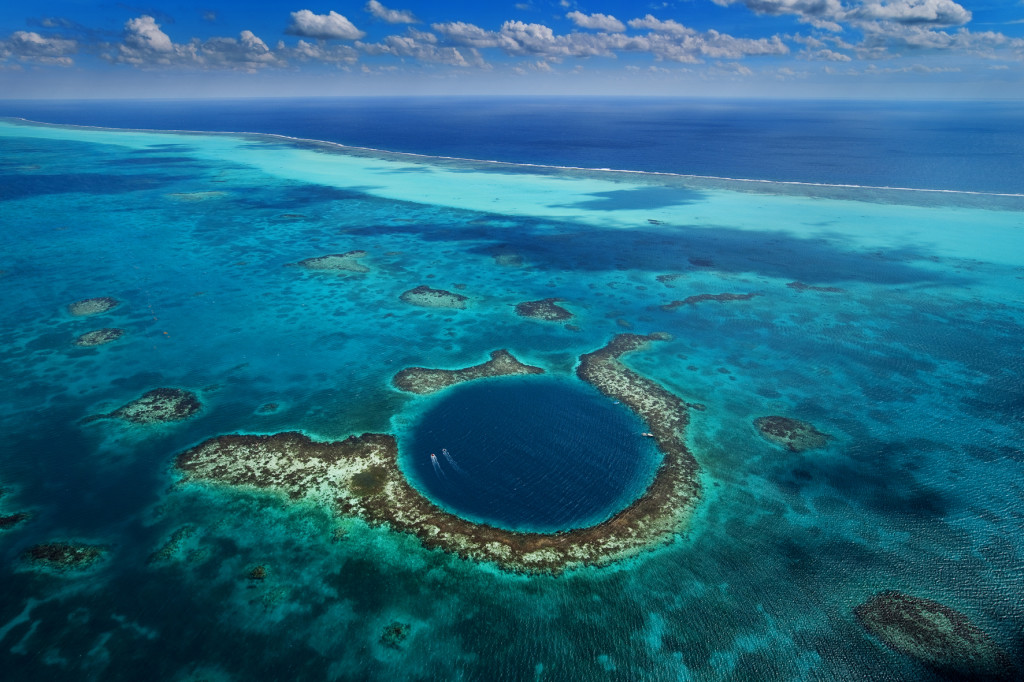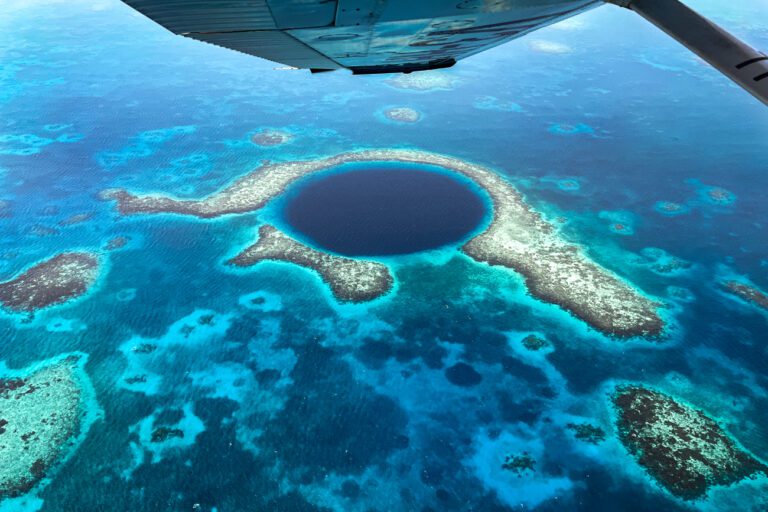Hidden within the azure waters of the Caribbean, the Blue Hole in Belize stands as one of the most iconic dive sites on the planet. Renowned for its breathtaking beauty and mystique, this underwater sinkhole is a magnet for scuba divers and adventure seekers from around the world. In this extensive 2000-word article, we will descend into the mesmerizing depths of the Blue Hole, unveiling its geological history, marine wonders, and the awe-inspiring experience it offers to divers who venture into its abyss.
The Blue Hole: A Geological Wonder
The Blue Hole is a natural wonder and a UNESCO World Heritage site located in the heart of the Belize Barrier Reef Reserve System. It was made famous by legendary explorer Jacques Cousteau, who described it as one of the world’s top ten dive sites. But what exactly is the Blue Hole, and how did it form?
- Geological Origins: The Blue Hole is a massive underwater sinkhole, a collapsed cave system that formed during the last Ice Age when sea levels were much lower. It is part of a larger network of underwater caves and tunnels that crisscross beneath the Yucatan Peninsula.
- Size and Dimensions: The Blue Hole is approximately 1,000 feet (305 meters) in diameter and plunges to a depth of around 410 feet (125 meters). Its perfectly circular shape and deep blue color are truly mesmerizing, drawing divers and researchers alike.
- Stalactites and Stalagmites: What sets the Blue Hole apart from other sinkholes is the presence of massive stalactites and stalagmites deep within the cavern. These formations provide a glimpse into the cave’s history and reveal that the Blue Hole was once above sea level.
The Underwater Experience: Diving the Blue Hole

The allure of the Blue Hole extends beyond its geological marvels. It is the underwater experience that truly captivates divers. Here’s what you can expect when diving into this enigmatic abyss:
- Descend into Darkness: As you descend into the Blue Hole, you’ll notice the gradual change in water color, from brilliant turquoise to deep blue. The descent can be eerie as the sunlight diminishes, creating a surreal, otherworldly atmosphere.
- Glimpse the Stalactites: Divers who venture to the cavern’s depths, beyond recreational limits, may catch sight of the ancient stalactites. These eerie formations loom in the darkness, bearing witness to the cave’s ancient history.
- Aquatic Encounters: While the Blue Hole itself lacks the vibrant marine life of other dive sites in Belize, the surrounding waters teem with life. Reef sharks, including the imposing bull sharks, often patrol the edges of the sinkhole, creating thrilling encounters for divers.
- Coral Gardens: Ascending from the depths, divers reach the shallower waters surrounding the Blue Hole. Here, they can explore stunning coral formations and encounter a variety of marine life, from colorful fish to graceful rays.
Diving the Blue Hole: Considerations and Precautions
While the Blue Hole offers a once-in-a-lifetime experience, it’s essential to approach this dive site with caution and proper preparation. Here are some key considerations:
- Advanced Diving: Diving the Blue Hole is considered an advanced dive due to its depth and potential for strong currents. Divers should have advanced certification and experience.
- Nitrox: Many divers choose to dive the Blue Hole with enriched air (nitrox) to extend bottom time and reduce the risk of nitrogen narcosis. Proper training in nitrox use is crucial.
- Depth and Decompression: The Blue Hole’s depth requires careful monitoring of dive profiles and adherence to decompression procedures to avoid decompression sickness.
- Safety Stops: Ascending slowly and making safety stops are critical aspects of diving the Blue Hole to minimize the risk of nitrogen buildup.
- Equipment: Proper equipment, including redundant air sources and a well-maintained dive computer, is essential for a safe Blue Hole dive.
The Great Blue Hole Expedition
Diving the Blue Hole is often part of a larger diving expedition, as it is located within the Lighthouse Reef Atoll. This atoll, part of the Belize Barrier Reef Reserve System, offers a wealth of dive sites and marine wonders beyond the Blue Hole.
- Half Moon Caye: One of the nearby highlights is Half Moon Caye, a nesting site for red-footed boobies and a prime location for birdwatching.
- The Aquarium: Just outside the Blue Hole, The Aquarium is a vibrant dive site known for its stunning coral formations and an abundance of marine life, including schools of tropical fish and rays.
- Long Caye Wall: This wall dive is celebrated for its vertical drop-off and the opportunity to spot reef sharks, turtles, and eagle rays.
Conservation Efforts in Belize
Preserving the natural beauty and biodiversity of the Blue Hole and its surroundings is crucial for future generations of divers to enjoy. Belize has taken steps to protect this fragile ecosystem:
- Marine Reserves: The Blue Hole and Lighthouse Reef Atoll are part of Belize’s marine reserves, offering protection to the delicate ecosystems within.
- Dive Permits: Divers are required to obtain a permit to visit the Blue Hole, and entry fees contribute to conservation efforts.
- Responsible Diving: Divers are encouraged to follow responsible diving practices, such as not touching or disturbing marine life and avoiding contact with delicate coral formations.
The Enigmatic Blue Hole: A Dive of a Lifetime
Diving the Blue Hole in Belize is a journey into the unknown, an exploration of geological wonders and a rare opportunity to encounter the mysteries of the deep. While it poses challenges and requires advanced training, the rewards are immeasurable. The chance to descend into the abyss, glimpse ancient stalactites, and witness the marine life that thrives in these waters is an experience that lingers in the memory of every diver who dares to explore its depths. The Blue Hole is not just a sinkhole; it’s a portal to a world of wonder, beauty, and adventure that continues to beckon to those who seek the extraordinary in the underwater realm.
UP NEXT
Scuba Diving in Egypt: Unveiling the Underwater Treasures of the Red Sea
Scuba Diving in Bali: Exploring Indonesia’s Most Famous Island



